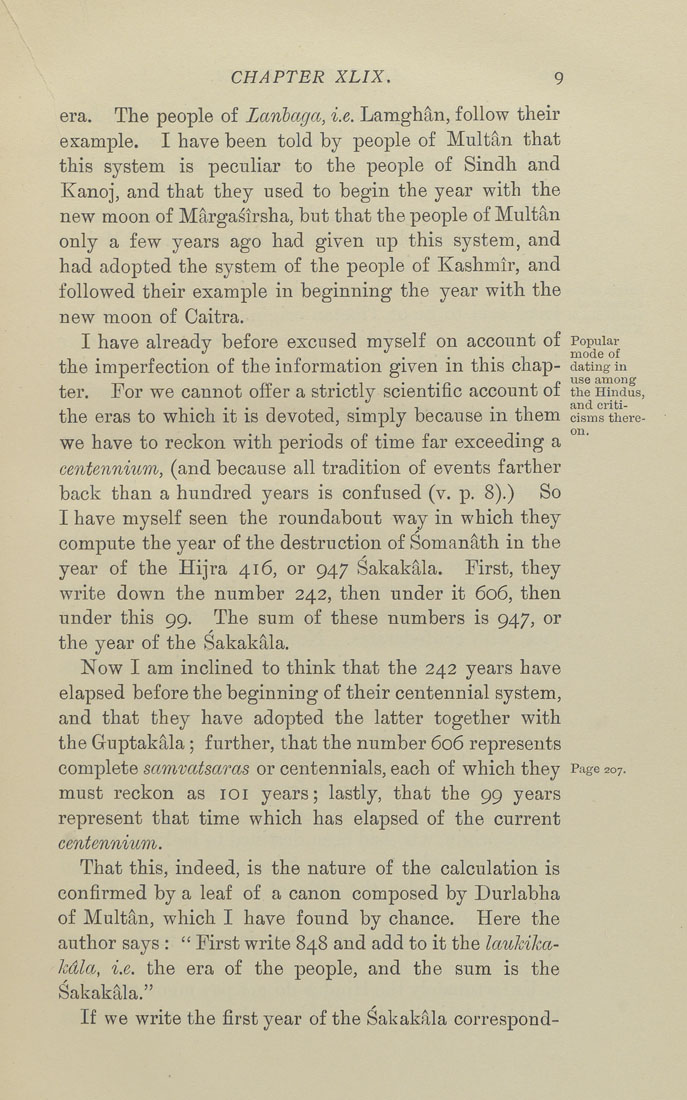CHAPTER XLIX. 9
era. The people of Lanbaga, i.e. Lamghan, follow their
example. I have been told by people of Multan that
this system is peculiar to the people of Sindh and
Kanoj, and that they used to begin the year with the
new moon of Margasirsha, but that the people of Multan
only a few years ago had given up this system, and
had adopted the system of the people of Kashmir, and
followed their example in beginning the year with the
new moon of Caitra.
I have already before excused myself on account of Popular
. p T . n .. • i-i mode of
the imperfection of the information given m this chap- dating in
ter. For we cannot offer a strictly scientific account of the Hindus,
the eras to which it is devoted, simply because in them dsmsthere-
we have to reckon with periods of time far exceeding a
centennium, (and because all tradition of events farther
back than a hundred years is confused (v. p. 8).) So
I have myself seen the roundabout way in which they
compute the year of the destruction of Somanath in the
year of the Hijra 416, or 947 Sakakala. First, they
write down the number 242, then under it 606, then
under this 99. The sum of these numbers is 947, or
the year of the Sakakala.
Now I am inclined to think that the 242 years have
elapsed before the beginning of their centennial system,
and that they have adopted the latter together with
the Guptakala; further, that the number 606 represents
complete samvatsaras or centennials, each of which they Page 207.
must reckon as loi years; lastly, that the 99 years
represent that time which has elapsed of the current
centennium.
That this, indeed, is the nature of the calculation is
confirmed by a leaf of a canon composed by Durlabha
of Multan, which I have found by chance. Here the
author says : " First write 848 and add to it the laukika-
kdla, i.e. the era of the people, and the sum is the
Sakakala."
If we write the first year of the Sakakala correspond-
|








